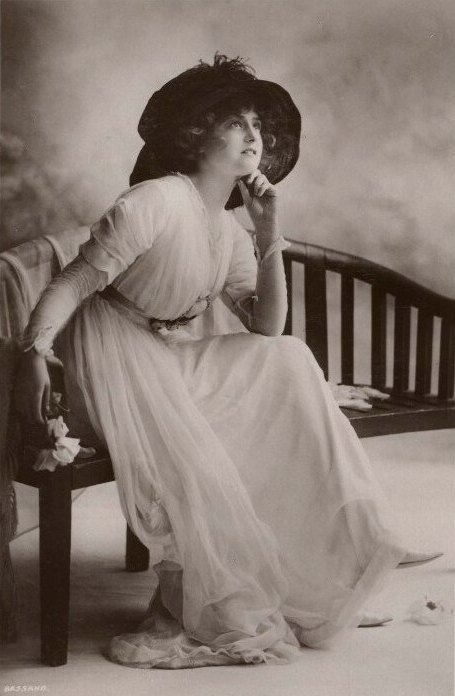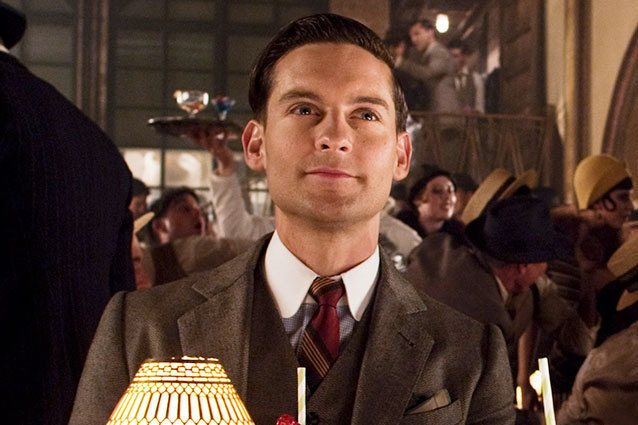By now, the sophomores have concluded reading F. Scott Fitzgerald’s famed novel ‘The Great Gatsby’ and have likely watched the 2013 movie, which for many, is a shining example of the culture and society in 1922. When the film first released, it was quickly critically acclaimed, and sparked a public interest in the 1920s, painting an image of what the dazzling era was like.
However, at the same time, it spread a number of misconceptions about the time period, particularly in fashion. This article seeks to examine the accuracies, and inaccuracies within the fashion of the 2013 Great Gatsby film, and also educate readers on the fashion of 1922.
Understanding 1900s-1920s Fashion
In 1922, Western fashion was fundamentally changing as a whole, especially in women’s fashion. During the Edwardian Era of 1901-1912, fashion largely derived from what had been set in the Victorian Era, consisting of many thick layers, large hats, corsets, and more.
In fact, on a typical woman’s summer dress, layers included…
- Chemise, this would be the lowest layer, and was designed to be durable and prevent the skin from being hurt by corsets, and protect the corset from things like sweat.
- Corset, this would be for back support, held up stockings, and largely created the classic “hourglass” shape seen often in Edwardian fashion.
- Corset cover, this would prevent harsh edges from showing in the overall dress.
- Hip padding, this was mostly for aesthetic in order to aid in the creation of an hourglass shape without tight corset lacing.
- Petticoat, an example would be a skirt that goes under the main dress to “fluff” the dress.
- The overall dress, sometimes in one part, maybe two with a top and a skirt.
- A hat, these were extremely popular and fashionable during the Edwardian Era, and would be worn with extremely sharp hat pins to keep it in place.

Actress Ms. Gabrielle Ray, the most famous actress and most photographed woman in the world during the Edwardian Era. (Photo from 1900-1912)
After the Edwardian Era ended and World War I began, fashion took a drastic change on account of fabric shortages caused by the war, and the younger generation, as they often do, set their own trends, and as fashion evolved, the fashion of the 1920s was unrecognizable from that of the Edwardian Era.
Fashion of the Great Gatsby Film
Now that we have given a brief history lesson on the evolution of early 1900s fashion, now it is time to examine the outfits of the Great Gatsby, in particular four will be analyzed. Those being, Gatsby’s iconic pink suit he wears at the Plaza Hotel, Daisy’s tea gown that she wears during the tea scene with Nick and Gatsby, Nick’s typical everyday outfit, and finally, Jordan’s outfit she wears at the Plaza Hotel.
Gatsby’s Pink Suit
By the 1920s, with the United States having just exited the First World War and a new age of prosperity, leading to fashion companies wishing to craft a new, fashionable, “American” look, thus leading to brighter, more flashy colors being produced and worn by young, wealthy and fashionable men. To reflect this, and Gatsby’s suit attempts to reflect this, yet there are a few minor inaccuracies. The most prominent, is that the collar is rather low for a 1920s garment, if one looks at photos and illustrations of men in the 1920s, particularly the early 1920s when the movie takes place, almost always the neckline is tall and stiff. The outfit is also relatively loose near the waist, contrasting the tight appearance common in the men’s fashion of the early 1920s.
Although Gatsby’s suit is clearly meant for a young, fashionable “new money” kind of person like himself, the structure of it would still likely consist of the tall and stiff collar, and tighter appearance. Despite this, it is overall accurate.


Daisy’s Day Gown
Unfortunately, in media trying to depict a more historical setting, it is an all too common occurrence in which men’s fashion is relatively accurate, while women’s fashion is intentionally altered for the sake of appealing to modern beauty standards, and the audience’s expectations about that era. Daisy’s day gown that she wears for the iconic tea scene with Gatsby, is unfortunately a prime example of this.
In 1922, women’s fashion was a large contrast to the pre-war Edwardian fashion. Now, large dresses that required layers upon layers, extremely intricate lacing, and shaped the body into an hourglass silhouette were out of fashion, and replaced with fashion that was easy to move in, and rather quick to put on. While Daisy’s outfit does succeed at those parts, appearance-wise, it has little to no accuracy.


Starting with the hat, in the film, Daisy’s hat does not reflect any sort of hat popular in 1922, and most certainly not any of the ones shown in the reference image. The overall design of the hat, is also senseless as such a large hat would hinder movement, and its appearance is just… hideous. Rather, popular hats of 1922 still had a traditional ‘Edwardian’ look to them, albeit at a reduced size, and less intricate with things such as lacing, flowers, and feathers. Another hat that was gaining popularity in 1922, was the cloche, a small bell-shaped hat, however, its peak popularity was after 1922, in the late 1920s. If Daisy had been wearing a cloche or a more traditional Edwardian inspired hat, her outfit would be nearly ten times more accurate.
Daisy’s gown itself, is also surprisingly tight in appearance, contrasting to the loose, free appearance that 1920s day dresses aimed for. It also is oddly intricate with lacing, which was declining in the 1920s among day dresses. Along the waist, is also some sort of strange sash or ribbon, while sashes and ribbons did exist on 1920s dresses, it would most certainly not be worn in this way, as shown in the reference image of actual 1920s fashion. On the shoulders as well, odd feather decorations are displayed, although, this simply did not exist in the daily fashion of 1922, nor would it be on an outfit worn for tea. Overall, Daisy’s gown is highly inaccurate, and is much more an example of how today’s common audience imagines the 1920s.
Nick’s Daily Outfit
Nick’s daily outfit, is also the result of the changing fashion of the USA in the 1920s. In certain scenes, Nick can be seen wearing a straw hat, which had become popular after the Edwardian Era, and differed greatly from the bowler hats and top hats that had been previously popular. In comparison to Gatsby’s suit, Nick’s suit seems to be somewhat more accurate on account of the styling of his collar. By and large, this is typically what a man would wear in 1922 on a daily basis.

Unfortunately however, it also shows how the producers of the film significantly valued accuracy for men’s fashion over accuracy for women’s fashion. In fact, while men’s fashion had been designed in collaboration with the company ‘Brooks Brothers’, which was prominent in the 1920s, women’s fashion had been designed by Prada, who clearly did not care for accuracy, and were more focused on creating something that would be satisfying to the modern viewer.
Jordan’s outfit
Falling victim to the similar faults of Daisy’s day gown, Jordan’s outfit also appears to have much artistic liberty taken in order to appeal to modern viewers.

While this particular outfit from Jordan shows her wearing a form of trousers, this may be allowed to be excused considering that such trousers were in use as early as the late 1800s, however with the top garment, the case is different. With a deep V-neck plunge, and clearly being more revealing than most outfits, it appears that the designers had a ‘flapper’ gown in mind, which was worn by young, rebellious women who typically danced at speakeasies. However, gowns such as flapper inspired ones tended to be forms of evening-wear, and as explained with Daisy’s gown, day wear tended to be rather simple. However, there are examples of 1920s day wear with V-neck style plunges.

On a side note, Jordan’s hairstyle, appears to be popular bob-style frequently associated with the 1920s. However, this particular bob cut that Jordan wears, which, according to a 1924 guide on hairstyles is very similar to the “Boyish-bob”, would likely not be very popular as early as 1922, and appears to have become more popular beginning in 1924, with its peak in the late 20s. Jordan’s haircut, while not 100% inaccurate, is most likely not what she would be wearing in 1922. Rather, her hair would have more curls, and be less “straightened.” Overall, Jordan’s outfit is probably the most prime example of the designers for the film trying to convey what people think the 1920s were, rather than conveying something based on historical accuracy.
